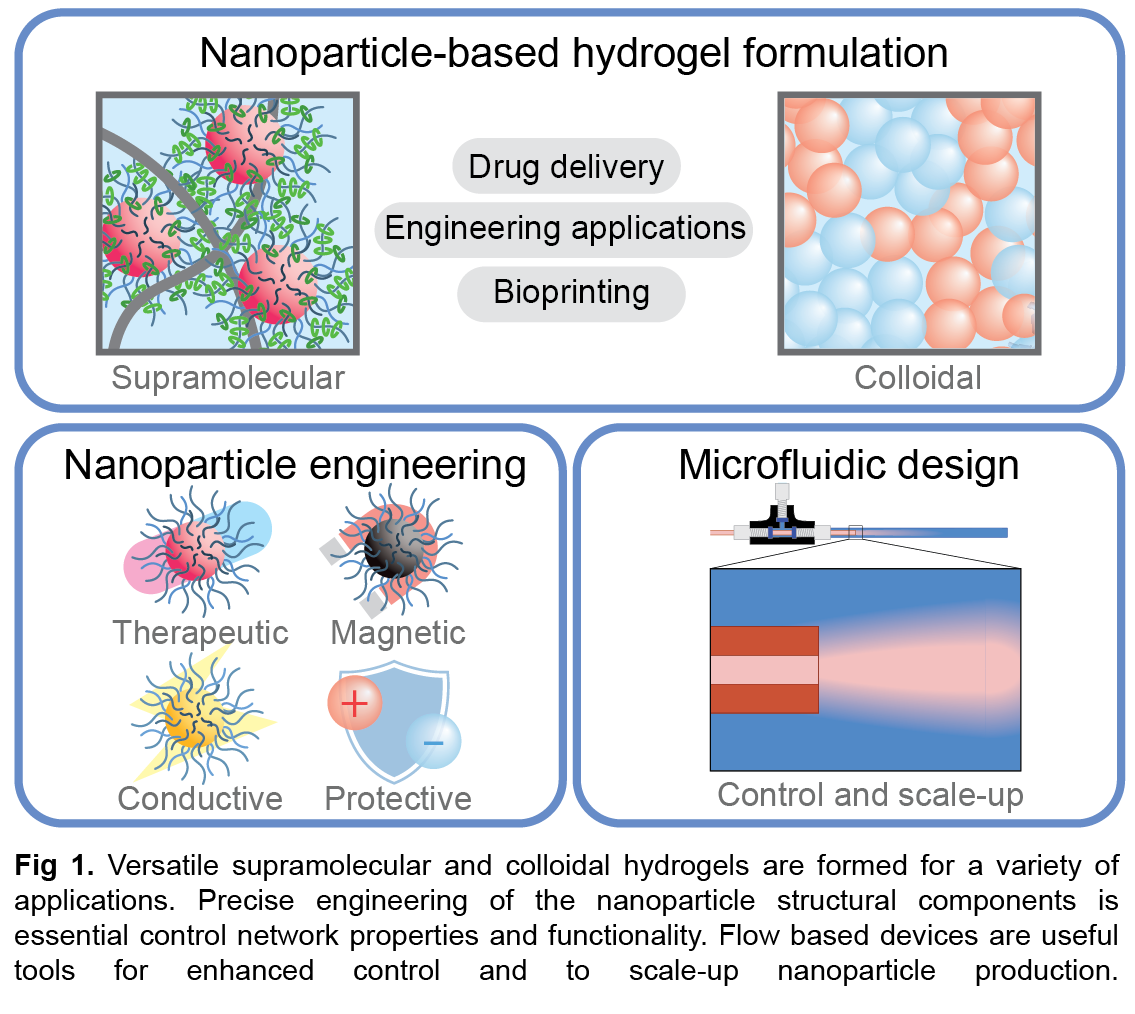2022 Annual Meeting
(168i) Scalable and Modular Supramolecular and Colloidal Hydrogels for Biomedical Applications
Authors
Giovanni Bovone - Presenter, Zurich ETH
Elia A. Guzzi, ETH Zurich
Stéphane Bernhard, ETH Zurich
Natthaporn Klubthawee, Thammasat University
Mark Tibbitt, ETH Zürich
Moldable hydrogels are increasingly used in industry and biomedicine as their rheological properties combine versatile functionality with the ability to inject and extrude them through needles and catheters.1 Among these, supramolecular and colloidal nanocomposite materials leverage nanoparticles as structural components to enhance their mechanical properties and expand their application spectrum.2,3 Transient physical interactions, such as hydrogen bonding, hydrophobic and electrostatic interactions, allow supramolecular and colloidal hydrogels to flow under applied stress (shear-thin) and reform a stable network (self-heal).1 Here, we show how nanoparticle design is essential to control colloidal hydrogel network properties and functionality for biomedical and engineering applications. We designed a library of polymeric, gold, and iron oxide nanoparticles, as well as electrostatically charged polysaccharide nanoparticles.4,5 Fluidic devices were engineered to produce polymeric nanoparticles with enhanced control over nanoparticle properties as well as to scale-up and automate production.6,7 The different nanoparticle building blocks were combined or mixed with biopolymers to form colloidal or supramolecular hydrogel networks. These materials showed broad versatility and were used for drug delivery, bioprinting, and magnetic and electroconductive applications.
Overall, we demonstrate the importance of nanoparticle design to make versatile nanocomposite hydrogels, which have the potential of addressing biomedical and engineering problems where both injectability and functionality are needed.
Overall, we demonstrate the importance of nanoparticle design to make versatile nanocomposite hydrogels, which have the potential of addressing biomedical and engineering problems where both injectability and functionality are needed.
References:
[1] Uman, S. et al. J. Appl. Polym. Sci. 48668, 1â20, (2019)
[2] Bernhard, S. et al. Adv. Drug Deliv. Rev. 171, 240â256, (2021)
[3] Diba, M. et al. Adv. Mater. Interfaces 5, 1â21, (2018)
[4] Bovone, G., Guzzi, E. A., Bernhard, S. et al. Adv. Mater. 2106941, (2021)
[5] Klubthawee, N., Bovone G. et al. Adv. Healthc. Mater. 2101426, (2021)
[6] Bovone, G. et al. AIChE J. 65, 1â11, (2019)
[7] Bovone, G. et al. Front. Bioeng. Biotechnol. 7, 1â11, (2019)
